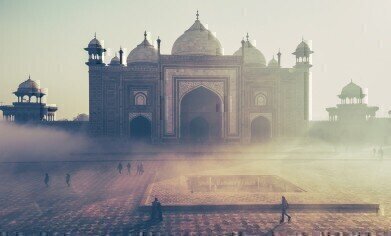Air Clean Up
India Accounts for Two-Thirds of Cities with Worst Air Pollution
Mar 22 2020
21 of the 30 most polluted cities in the world are to be found in India, according to the 2019 World Air Quality Report. Compiled by IQAir AirVisual, the report assimilates data collected from air quality sensors all over the globe and uses it to create a picture of pollution hotspots around the world. This year, Ghaziabad (located on the fringes of New Delhi) won the ignominious title of most polluted city in the world.
India had five more metropoles among the top 10, while the surrounding region fared little better. Indeed, 27 of the 30 cities with the worst air quality were to be found in Southeast Asia, signalling that much work must be done to curb the territory’s terrible reputation. China, meanwhile, continued to show encouraging improvements to its own track record, with capital city Beijing halving its particulate matter 2.5 (PM2.5) concentrations over the last 10 years and falling out of the top 200 most polluted cities for the first time.
Indian air quality crisis
The average PM2.5 levels in Ghaziabad in 2019 were 110.2 – that’s a staggering nine times the limit which the Environmental Protection Agency (EPA) in the US deems acceptable. Meanwhile, the Indian capital suffered its own crisis in November last year, when the government declared a public health emergency after an Air Quality Index reading of 800 was recorded. For context, the level regarded “hazardous” is three times less than that.
India is at least aware of the problem. Last year, the country hosted the 2019 Conference on Emissions Monitoring (CEM), which attracted industry specialists and experts from all over the globe. The Indian government also recently launched its National Clean Air Programme (NCAP), which has targeted a 20% to 30% reduction of PM2.5 and PM10 in 102 cities across the country by 2024 (compared to 2017 concentrations).
Causes for optimism
The efforts seem to be already paying dividends. While Ghaziabad was the most polluted city on the planet this year, it’s AQI still showed considerable improvement. In 2019, it stood at an average of 110.2, which is significantly better than the 135.2 recorded in 2018 and the 144.6 the year prior. Another bright spot is the growing market for continuous emissions monitoring systems (CEMS) in the region; the number of monitoring stations leapt up by 200% from 2018.
However, there remains much work still to be done, in India and further afield. For example, the continent of Africa remains woefully underserved by air quality sensing equipment. Despite the fact that it is home to 1.3 billion people, there are under 100 monitoring stations which gather real-time data that can be viewed by the general public. Enhancing this network and making the information freely accessible by all – as has recently occurred in Angola, the Democratic Republic of Congo, Egypt, Ghana and Nigeria – is crucial to raising awareness and driving change.
Events
May 05 2024 Seville, Spain
May 13 2024 Munich, Germany
May 23 2024 Beijing, China
May 23 2024 Beijing, China
Jun 10 2024 Algiers, Algeria














